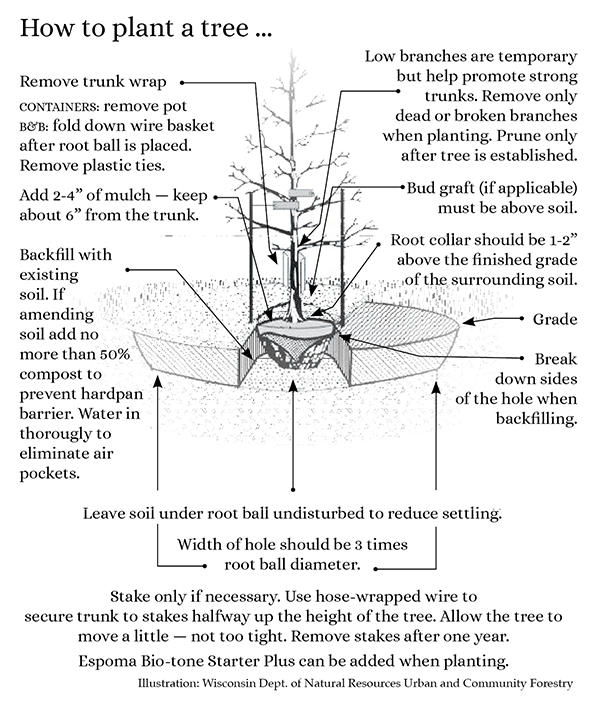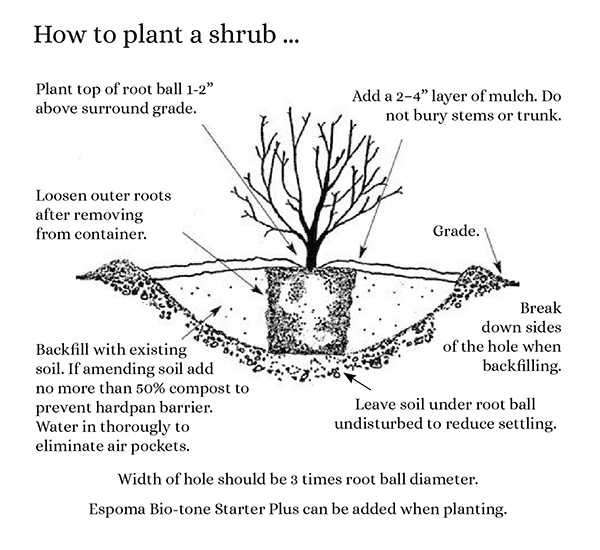Our trees and shrubs are guaranteed!
Vinland Valley Nursery sells fine quality plants that are guaranteed at retail price to perform when planted and cared for to our specifications.
Common reasons for plant failure are inadequate watering and planting too deeply.
Before planting trees and shrubs, it is advisable to test the area for proper drainage by filling a test hole with water and observing drainage. Areas with standing water will need special planting or suitable plant material.
Contact us at the first sign of trouble so we can identify the problem before it’s too late!
Our sincerest desire is for you to enjoy success. Our guarantee is offered for one year from purchase date with a one time credit on the original purchase price of trees and shrubs.
The customer must provide a cash register receipt* (no credit card receipts please) and the deceased or damaged plant. Installation and delivery are not part of the guarantee credit. *We now have the capability to record your receipt in our database at time of purchase! Please be sure to ask if you would like us to keep a copy of your purchase on record.
Vinland Valley Nursery does not guarantee perennials, herbs, tropicals, vegetable starts, or annuals.


WATERING: THE KEY TO SUCCESS
The number one reason for plant failure is inadequate watering. Knowing when and how to water correctly can ensure a healthy growing season with lush plants that will thrive and become more drought tolerant over time.
Landscape plants require deep watering to encourage deeper, stronger root growth.
- Perennial garden beds will establish best with about 2 inches of water one to three times per week depending on conditions*. Use an oscillating sprinkler or soaker hose.
- Shrubs and container-sized trees will do best when water is allowed to slowly soak in around roots for 15-20 minutes one to three times per week depending on conditions*. For a single plant place the end of a hose at the stem or trunk and run water at a slow trickle. For groups of shrubs arrange soaker hose around the base of each plant to leave in place for the season. This will make connecting and running water convenient.
- Large balled & burlaped trees will require water running at a slow trickle from the end of a hose for 20-30 minutes one to three times per week depending on conditions*. Where water must be hauled, use tree bags or pickle buckets with small holes that can be hand-filled and left to slowly drain above roots. Since the amount of water is limited by the container size more frequent filling will be necessary to properly direct roots down deep.
* During periods of extreme heat and drought, more frequent watering is necessary.
Watering more often on the soil surface will lead to weaker root growth and underwatering. Overhead sprinklers are best used for lawns since water can be lost to evaporation, and some plants such as roses are prone to diseases that thrive on wet foliage. Soaker hoses and drip irrigation are always better, going straight to the roots while keeping foliage dry.
Hand watering is best left for small garden areas and container plants which normally require daily watering in summer. Winter containers displaying hardy plants require weekly to biweekly watering when there is no precipitation.
PLEASE NOTE: with few exceptions drought tolerant plants are able to hold up during dry periods because their roots go very deep into the ground where soil moisture can be found even when rain has not fallen for weeks. This is why it takes weeks, months, and, in the case of large trees, even years to be self-sustaining. During periods of extreme drought, even long-established trees and landscapes will need supplemental water.
Drought can occur during cold winter months when evergreen plant foliage is especially vulnerable. Be sure to water on days when winter temperatures rise above freezing to give winter plants extra support when snow is in short supply.
The second most common cause of plant failure is too much water from improper drainage or planting too deeply! Plant material should always be placed with the soil surface inside the container to settle in at ground level. Where settling may occur or where clay soil causes water to drain more slowly, plant the root ball slightly above grade to keep the stems or trunk clear of soil and excess moisture.
When planting large shrubs and trees in unfamiliar ground it’s a good idea to dig a hole the size of the root ball and fill it with water to test drainage. If the water drains in fewer than three hours the drainage is excellent, and plants suited for dry locations will perform well. If the water takes from three to 12 hours to drain, then the drainage is adequate for most landscape plants (about 1 inch per hour). If it takes more than 12 hours, then the drainage is poor and plants suited to wet conditions should be used.
Ask us for recommendations for your conditions, or use our website search filters to find the perfect plants.